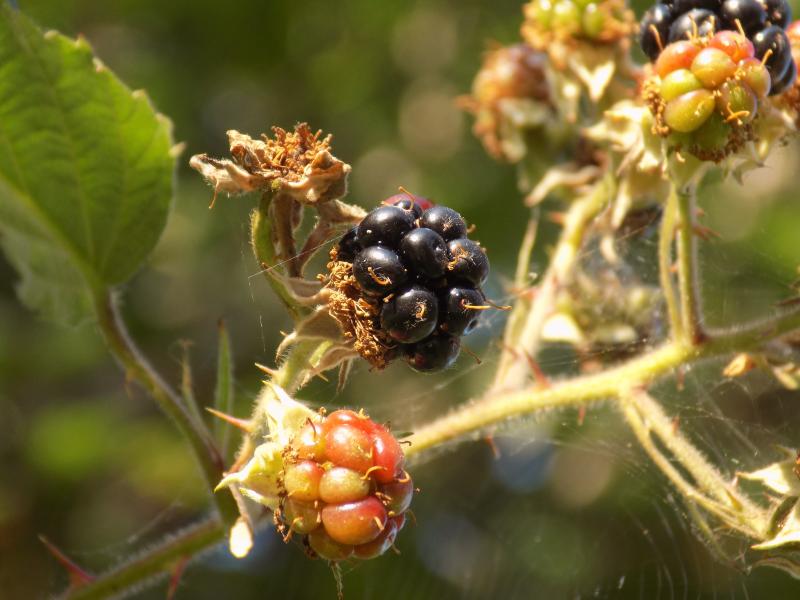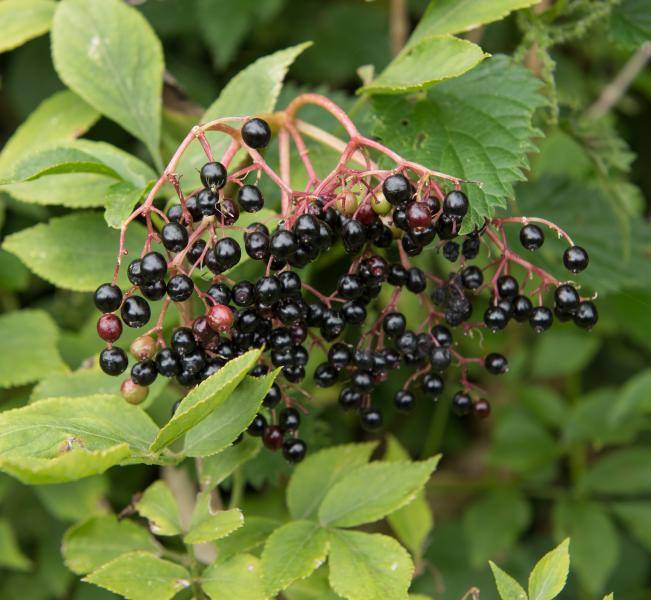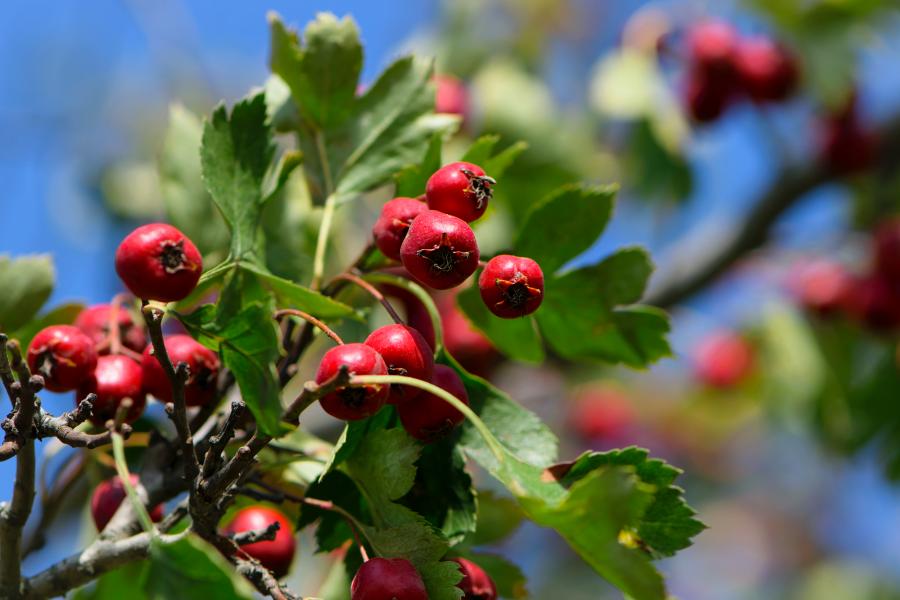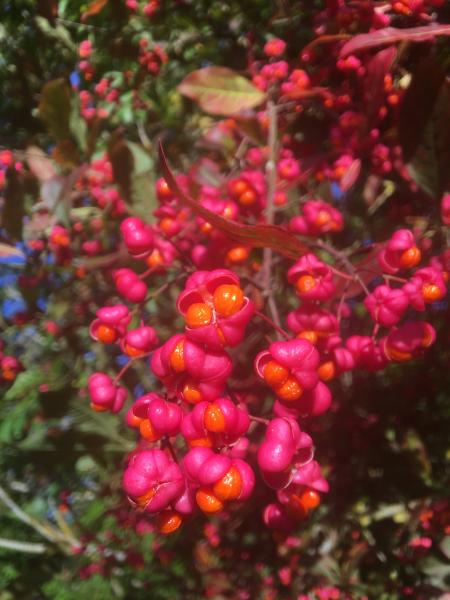Spotter's Guide - Autumn Berries
As the autumn rolls in, many of our Forest trees lose their flowers and develop rich-coloured berries. Here are our top 5 berries to look out for on Forest visits this season.
Blackthorn is commonly found in hedgerows throughout the Forest and is a thorny shrubby tree, growing very densely, forming thickets. This tree has large very sharp thorns and its leaves are finely toothed small ovals. It produces white flowers from March-April that give way to deep inky purple-black berries called sloes - commonly used to flavour gin, wine and preserves - in autumn and winter. It is valuable to wildlife all year round and is a favourite of the illusive brown hairstreak butterfly who lay their eggs on the young suckers.

Bramble is a rambling plant that produces pink or white flowers through the summer that develop into blackberries in the autumn months. These plants thorny arching stems are able to put out roots wherever they touch the ground! Bramble is not only a great food source for our wildlife, but it also provides invaluable protection for many species.

Elder trees have pinnate leaves formed of 5 to 7 pairs of leaflets which have serrated edges. They are found within woodland edge habitat, hedgerows and grassland scrub. During early summer elder produce beautifully scented large flat umbels constructed of many white flowers which develop and ripen into bunches of small sour berries which are purple-black in colour over autumn. Elder berries are an excellent food source for many bird and mammal species, and are often foraged to create tasty treats like crumble, jam and liqueurs. In folklore it is said that elder planted near your home is said to keep the devil away!

Hawthorn is a small shrub tree that can be found throughout the forest often forming part of hedgerow habitats. This tree's branches are thorned and its leaves are shiny with 3-5 lobes. It produces fragrant, white and pink flowers as early as February which give way to small, deep red berries called haws during autumn. Hawthorn is immensely valuable to wildlife supporting hundreds of species of insect as well as animals - its berries are a very important food source for many of the forest’s birds.

Spindle is a tall shrub that is best during the autumn when it showcases its vibrant pink and orange, four-lobed berries alongside its russet red leaves. When the berries form, they feed a wide variety of wildlife including red foxes, mice and birds. However, they are poisonous to humans. Within the Forest, it is often found along the edges of our woodland rides making spotting these berries easy! Did you know spindle is so named due to its past use? It was used to make spindles for spinning and holding wool!




